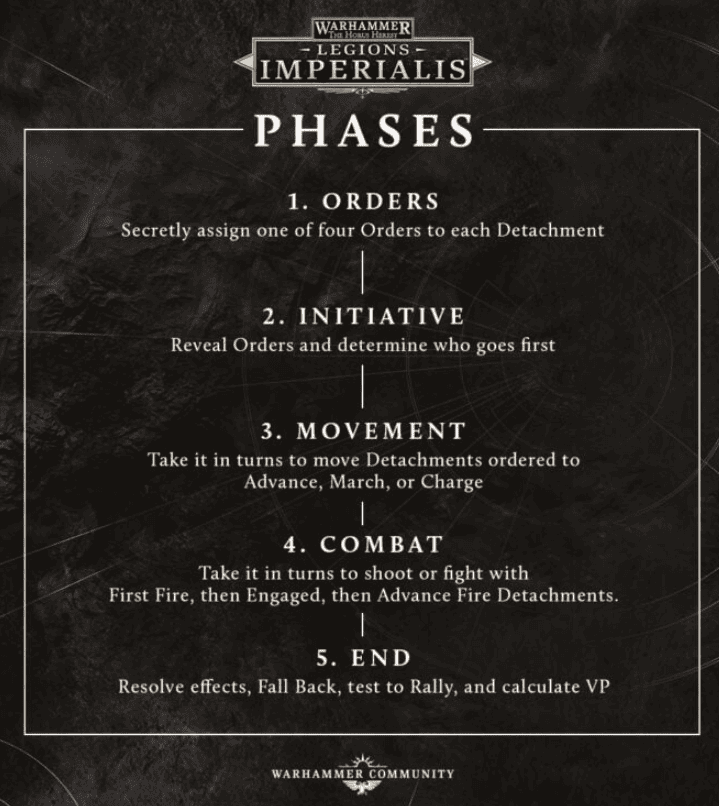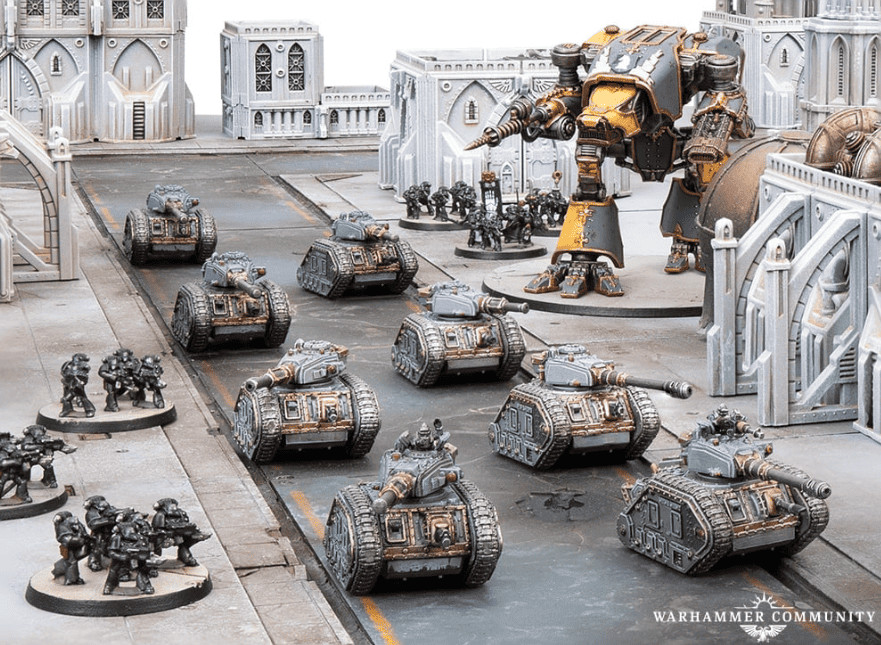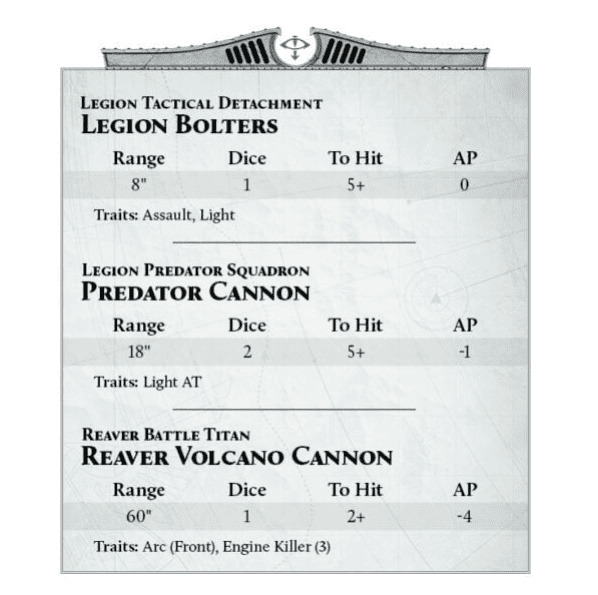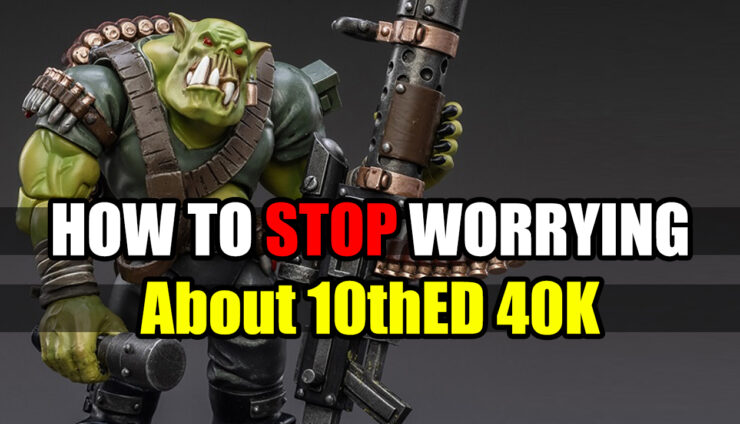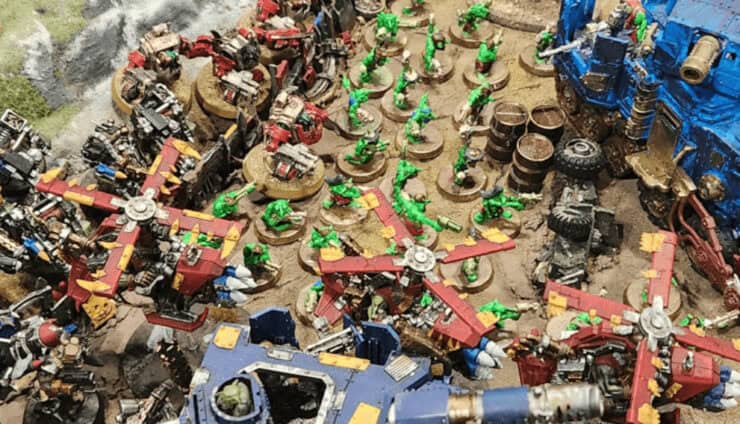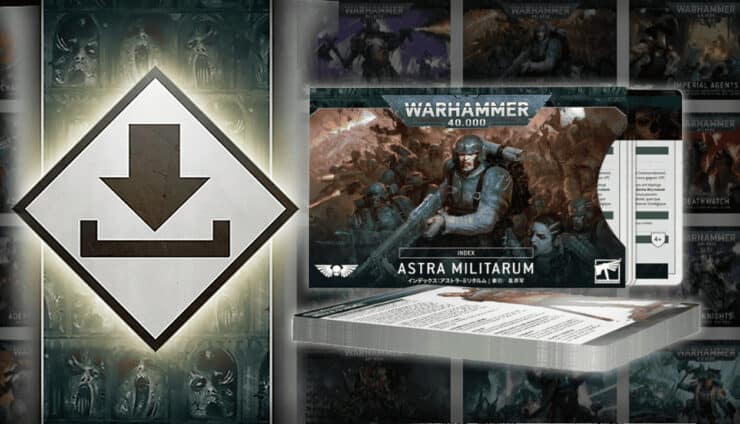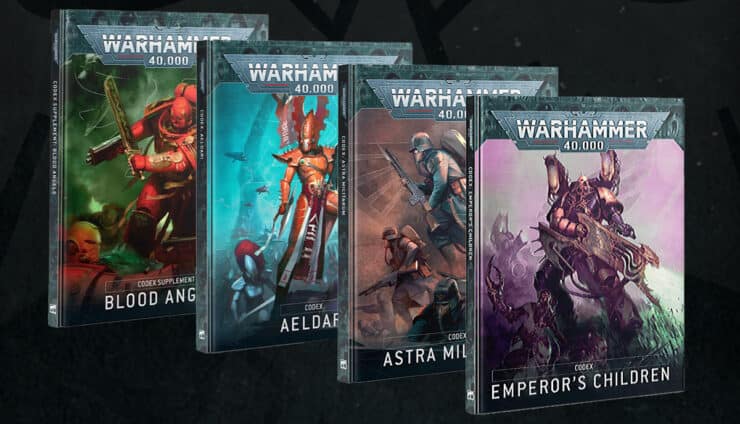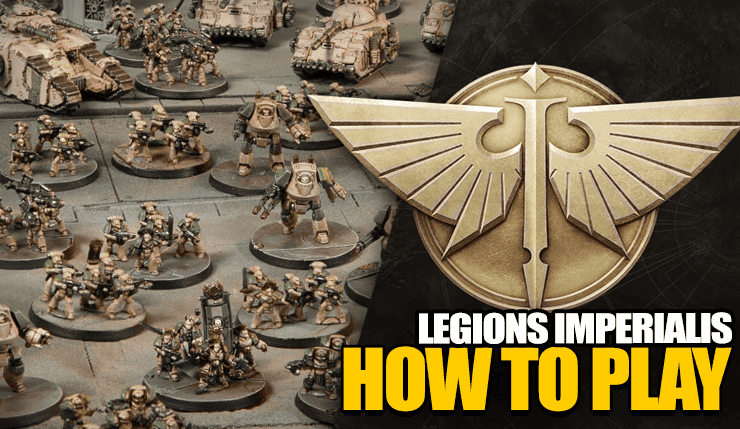
If you’ve patiently waited for Epic Warhammer 40k to return, it’s being rebranded in the Horus Heresy era as Legions Imperialis. While we’ve seen plenty of the miniatures in the starter box, it’s always nice to get more details of how the game will play out on the tabletop.
From the looks of it, average games will be 3,000 points and played on a 5’x4′ table, so there are plenty of tiny Titans and tanks everywhere!
How to Play Horus Heresy Legions Imperialis
The new details for how to play Horus Heresy Legions Imperialis comes from Warhammer Community.
Now, let’s start with how to muster an army.
We begin by choosing an Army. The recommended size is 3,000 points per side, played on a 5’ x 4’ battlefield.
The first step is to declare your Allegiance – whether you’re a Loyalist or a Traitor, which will constrain some of your choices for obvious reasons. Then, pick your Primary Army List – the force from which you’ll pick a minimum of 70% of your units. At present, this means either the Legiones Astartes or the Solar Auxilia, but other factions may join the fray in future…
So, this means whether you play traitor or loyalist, you’ll have to choose if you want to focus on the Space Marines or the Auxilia. Nothing too crazy here, but they do mention more factions, so let’s hope they bring more to the game.
You’re now ready to pick your units, using two distinct components: Formations and Detachments. Detachments are the main building blocks of an army, similar to individual units in larger-scale games – platoons of infantry, squadrons of tanks, batteries of artillery, banners of Knights, and so forth.
Formations are larger strategic groupings of Detachments, selected according to the Formation Organisation Chart. You must select at least one Formation from your Primary Army List for every 1,500 points of the agreed limit – so that’s (at least) two Formations at 3,000 points.
The Legion Demi-Company is the most flexible Formation available to the Legiones Astartes, though there are many Formations to choose from, including the specialised Legion Armoured Company and Legion Aerial Assault.
Considering you want as many models on the table, this seems a decent way to do it and brings back plenty of compulsory choices. However, this is just one of the formations, so we’ll have to see the benefits and restrictions with each detachment.
Legions Imperialis Turn Structure
Each round is divided into five phases. The most important thing to know here is that both players act within each of these phases, taking it in turns to activate their Detachments in Initiative order, according to hidden Orders that have been pre-assigned.
Using tokens placed face down next to their Detachments, players assign Orders simultaneously and in secret. Both players reveal their Orders once they’ve all been placed. There are four main Orders: First Fire, Advance, March, and Charge, plus Fall Back, which a unit can be assigned when they take heavy losses.
You then determine Initiative by rolling off. This governs who gets to activate their Detachments first.
It’s interesting to see this being a full back-and-forth game, where you use orders for each unit and then roll for the initiative of each unit. We’ll have to see if this will keep players more engaged with the game or if the constant rolling of initiative and going back and forth could bog things down a little.
Movement & Combat
These two phases work in the same way: players take it in turns to resolve the relevant Order tokens by activating Detachments one by one.
Orders affect how your Detachments can behave during both phases. Advance is the most flexible, allowing both regular movement and shooting, while March lets a Detachment move double its Movement characteristic – treble if it’s an entirely infantry Detachment – but not shoot. Charge allows either for a single movement, or a double movement if it gets a Detachment into base contact with an enemy Detachment. Detachments with First Fire cannot move, but they do get to shoot first. Finally, a Fall Back Order prevents a Detachment from moving – instead, they’ll have to retreat during the End phase.
This is set up quite familiar to players of GW games; if you march, you can’t shoot, then you can charge, just move and shoot, but if you stand still, you get to shoot before even combat is resolved.
Shooting & Combat
Combat is divided into three subphases: First Fire, Engagement, and Advancing Fire – which is to say, Detachments with a First Fire Order get to shoot, then you resolve close combat, then everyone else gets to shoot.
Shooting works pretty much the same as it does in most Warhammer games. Weapons have a range, an amount of dice to roll, a target number for the Hit roll, an Armour Penetration value, and Traits. Select a target in range, roll the right number of dice, and apply any modifiers to the roll. For each one that hits, the model gets a Save that can be modified. Traits are where extra variety happens – guns with the Light trait cannot hurt heavy tanks, for instance, while Assault weapons are more powerful up close – ensuring everything has a niche.
The interesting thing here is the order of combat. You fire first with units who did not move, then you do combat, and finally, you shoot with models who moved. Meaning the “combat”phase is entirely out of place with other games.
Combat, however, is a little different. The system harks back to the epic scale games of yore, in which individual models are paired off against each other. Then they make Fight rolls, rolling off with 2D6 and adding their Close Assault Factor (CAF) to the roll. Models get a bonus if they charged, and the loser takes a Wound, no Saves allowed – melee is seriously deadly, and even tanks can be overrun.
When faced with uneven numbers, you’ll have to “pair off” your models with more than one enemy each. Your outnumbered models will still fight each of their foes individually, but your opponent gets to roll an extra D6 for every time you’ve already fought. This means that the most elite fighters can still be worn down if you’re not careful to support them…
Combat is much different from current games, as you have to pair off with enemy models, and you roll with 2D6 and add your Assualt Factor to the roll. With the extra d6, this allows mobs of units to possibly beat more elite forces.
Click Here For The Latest Warhammer Previews
What do you think about the new gameplay details for how to play Horus Heresy Legions Imperialis?
Let us know in the comments of our Facebook Hobby Group, and make sure you enter the latest monthly giveaway for FREE today!
Get ad-free access to our hobby videos, a monthly crate of miniatures, and support some of the best creators out there for as little as $6 a month on Patreon!


